One of the most distinctive European wood species is the pear. Its fine grain, special colour, density and stability have made pearwood highly prized by craftsmen. Because of its colour, it is used for inlays and the ease with which it is worked makes it suitable for carving and turning. Because it is very stable, pearwood has been used over the years to make measuring instruments such as rulers and echelon. Pear wood also stains very well, which has led to it being used in the past to replace ebony. In the 19th century, during the Second French Empire, it was fashionable to make black furniture from ebony. As not all the nobility could afford very expensive furniture made from the rare wood brought from the colonies, ebony was replaced by black stained pearwood. The process was called ebonised pear, iar furniture obtained in this way was considered to be of great value. All this and much more has led us to dedicate this article to hairwood.
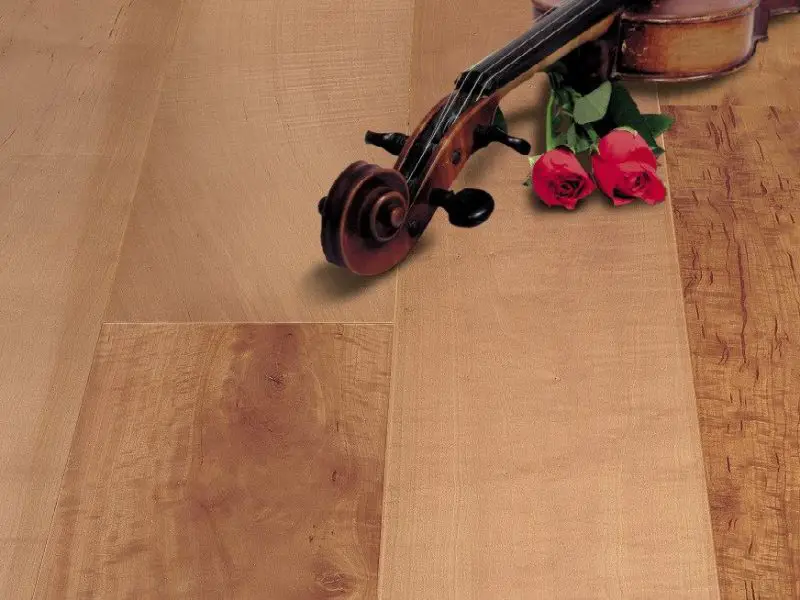
A symbol of fertility, wisdom, love, divine support
There are over 30 species of hair. The subject of the article is Pyrus Communis also known as common hair, European hair or Swiss hair. It is the wood most commonly used. In English it is pear, in French headstand, in German birne (birnenbaum), in Italian but, in Spanish peral.
Hawthorn is native to central and eastern Europe and southwest Asia, but is cultivated in all temperate climates in Europe, North America and Australia. It is the most important fruit tree in the temperate zone. Evidence of its existence goes back thousands of years and it is mentioned by Homer in the Odyssey. Depending on the culture, it is associated with fertility, wisdom, love, prosperity, longevity and divine support.
Because of the shape of the fruit, the hair is often associated with motherhood. The pear was the sacred fruit of the Roman goddess Hera, patroness of women, marriage and childbirth, and in ancient Greece it was associated with Aphrodite, goddess of love. Pears are ancient symbols of love, fidelity and also of separation. In China it is considered bad luck for a couple to eat a pear together by cutting it in half. In some European countries, the birth of a girl is celebrated by planting a pear.
In art, the pear shape has been symbolic of the female form for centuries, alluding to sensuality, sexuality, femininity, fertility and fruitfulness. Fruits and pear flowers have often been subjects for artists in various periods, from delicate Japanese paintings to famous painters such as Claude Monet and Georgia O'Keeffe.
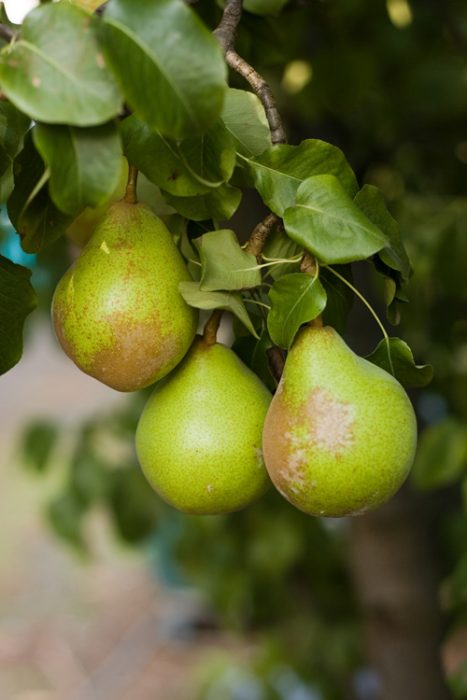
A cold-hardy, water- and light-loving fruit tree
The hawthorn is a fruit tree of the Rosaceae family that grows in humid temperate regions. It is cold hardy but needs light and dislikes hot, dry summers. Without water it has few fruits that remain small and do not develop. It can withstand temperatures as low as -18°C and in winter, when it is dormant, it can withstand temperatures as low as -40°C. It flowers in early spring, when temperatures can still be low (7°C). Lack of light affects the fruit, but also the ripening of the wood. Lives around 80-100 years, but West Asian variants are longer-lived.
The wild variety, which grows at the edge of forests, can reach 7-10 m in height, with a trunk diameter of 0.2-0.4 m. Grafted hairs can reach 15-20 m. The upright trunk is covered with bark with a braided bark whose rhizomes deepen with age. Leaves are oval-rounded, green, large, 7-8 cm long, glossy upper side with toothed or straight edge. Blooms in April, and the white flowers are clustered 4-10 to a white umbrella-like inflorescence.
The fruit is edible, spherical-elongated or conical-truncated, weighing between 150 and 300 g. The skin is shiny or covered with rust, green, yellow-orange or red. The flesh is juicy, ranging in colour from yellowish-white to reddish. The taste is sweet with a more or less intense aroma. In the centre are small, brownish seeds trapped in a harder area with lignified cells.
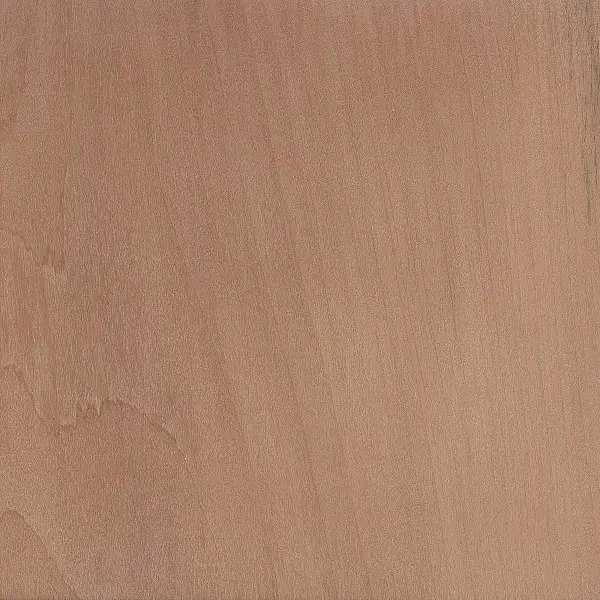
photo source: wood-database.com
Hairwood - characteristics and properties
Pear wood is the most beautiful wood from fruit trees, with a fine, delicate and uniform texture.
In cross-section through the trunk the annual rings are visible but not very clearly defined. The difference between sapwood and heartwood is hardly visible. The heartwood ranges in colour from pale pink or salmon to light reddish brown, and the sapwood is only very slightly lighter. If steamed, the pinkish colour becomes stronger, deeper. Wood from old plants develops brownish-purple colouring in the heartwood that increases its value.
The fibre is straight, with very fine uniform texture. The pores are diffuse, small, numerous, with no particular arrangement. very numerous and small, diffusely arranged, with no particular arrangement. Occasionally the pores in the heartwood have reddish-brown gums or mineral deposits. Medullary rays are narrow to medium and not visible to the naked eye. No characteristic odour.
Pear wood has an anhydrous density of 690 kg/m³ and a Janka hardness of 7380 N. It is considered a medium shrinkage wood and can warp on drying. After drying it is stable. It is not resistant to rotting and is quite difficult to impregnate. It is easy to process, both manually and mechanically. It turns and carves easily. No problems with gluing, staining and finishing. Black stain is a fairly good substitute for ebony.
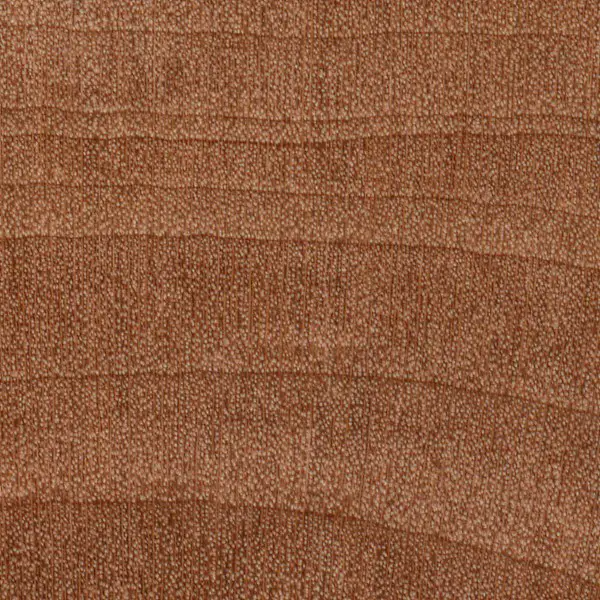
photo source: wood-database.com

photo source: luryfurniture.com
Uses of pear wood
Pear wood is used both as solid wood and as veneer, but it is not a material with heavy industrial use. It is valued as a wood for inlays or for making special objects such as pens, pipes, jewellery boxes. Craftsmen use it to make bowls, more special pieces of furniture and to carve decorative spoons. It is used to make wind instruments and guitars.
Being a hard and dense wood, it can be used for flooring.
It has no smell and taste, which is why it is used to make objects used in the kitchen - choppers, bowls, spoons.
It has a very pleasant aroma when burnt and is used for smoking meats.
The smooth and even texture makes it a very good wood for carving. It is said that in ancient Greece, statues of the goddess Hera were carved in pearwood.
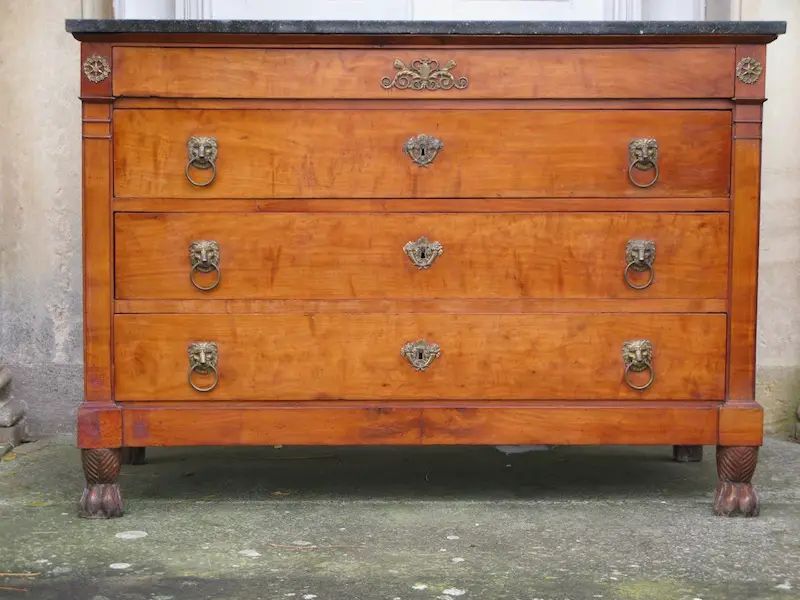
photo source: brownrigg-interiors.co.uk
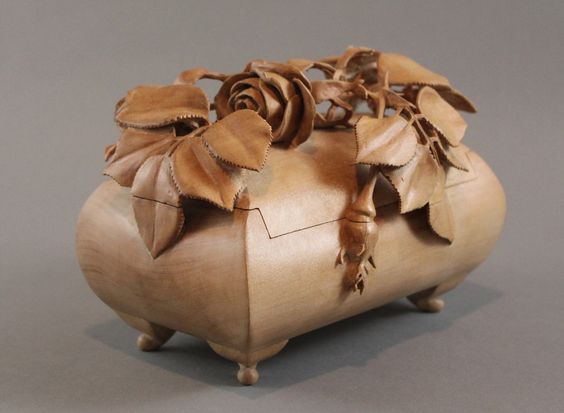
photo source: woodsymphony.com
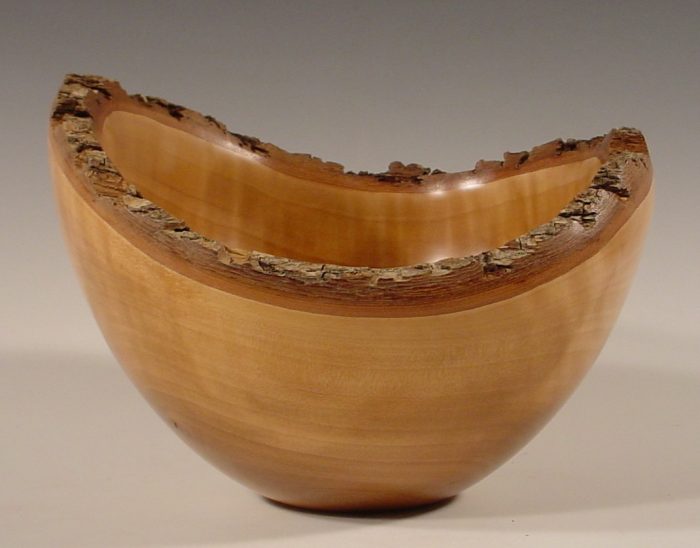
photo source: artizanmade.com
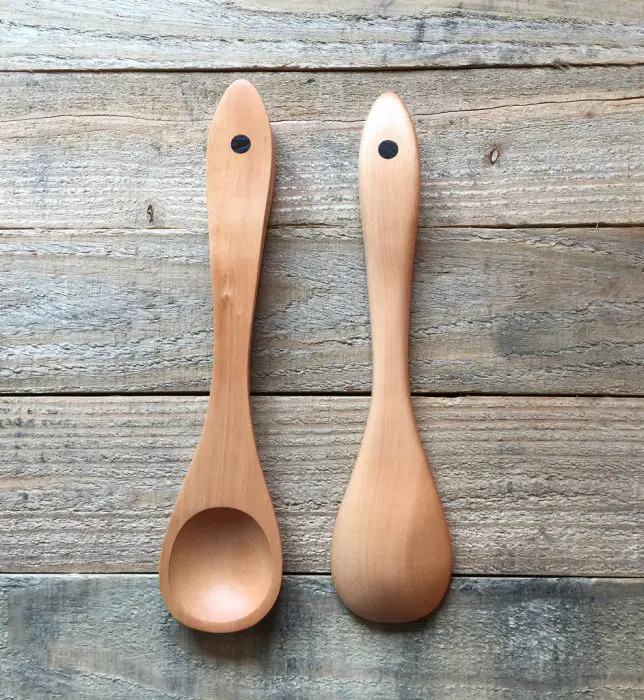
photo source: flickr.com
I hope you find the above information useful. As usual, additions are welcome. And if you have any questions or queries, please leave them in the space below. I'm sure I'll reply.



























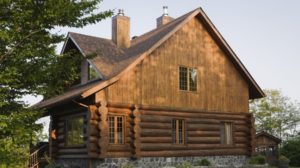

Good evening,
Can you advise me what colour flooring I can choose for the living room, as the library is a steamed wood colour.
Thank you.
Good evening!
It is difficult to give such advice because it depends very much on each person's taste.
The steamed wood (I assume you mean beech) has a slightly reddish colour. You should use a color that has this color in the composition and avoid colors that have green in the composition. That is, use colours such as cherry, red walnut, chestnut and avoid oak or rustic oak. But it all depends on what you like or don't like.
All the best!